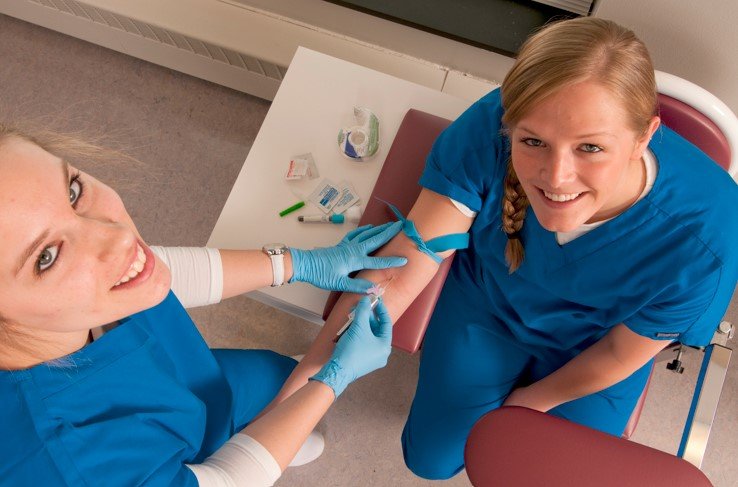Challenges and Strategies for Seamless Integration of Medical Devices with EHR Systems
Summary
- Hospitals are increasingly relying on medical devices for patient care, making seamless integration with EHR systems essential.
- Challenges such as interoperability issues and data security concerns need to be addressed for successful integration.
- Strategies like standardization, vendor collaboration, and staff training can help hospitals ensure seamless integration of medical devices with EHR systems.
Introduction
In the United States, hospitals are constantly seeking ways to improve patient care, streamline processes, and enhance efficiency. One of the key areas where hospitals are focusing their efforts is on the integration of medical devices with electronic health record (EHR) systems. The seamless integration of these two components is crucial for providing quality care, improving communication among Healthcare Providers, and ensuring accurate data collection and analysis. However, achieving this integration can be a challenging task due to various factors such as interoperability issues, data security concerns, and staff training needs.
Challenges in Integrating Medical Devices with EHR Systems
Several challenges can hinder the seamless integration of medical devices with EHR systems in hospitals. Understanding these challenges is essential for developing effective strategies to overcome them. Some of the key challenges include:
Interoperability Issues
One of the primary challenges in integrating medical devices with EHR systems is interoperability. Medical devices and EHR systems often use different communication protocols and standards, making it difficult for them to communicate with each other seamlessly. This can result in data silos, incomplete patient records, and inefficiencies in care delivery.
Data Security Concerns
Another significant challenge hospitals face when integrating medical devices with EHR systems is ensuring data security. Medical devices are vulnerable to cybersecurity threats, and if not properly secured, they can expose sensitive patient information to unauthorized access. Hospitals must implement robust security measures to protect patient data and comply with regulatory requirements.
Lack of Staff Training
Effective integration of medical devices with EHR systems also requires adequate training for hospital staff. Many healthcare professionals may not be familiar with the technology or know how to use it effectively. Without proper training, staff may not be able to maximize the benefits of integrated systems, leading to inefficiencies and errors in patient care.
Strategies for Ensuring Seamless Integration
Despite the challenges, hospitals in the United States can take proactive steps to ensure the seamless integration of medical devices with EHR systems. Implementing the following strategies can help hospitals overcome obstacles and maximize the benefits of integrated systems:
Standardization
Standardizing communication protocols and data formats is essential for ensuring interoperability between medical devices and EHR systems. By adopting industry standards such as HL7 and DICOM, hospitals can facilitate seamless data exchange and integration, reducing the risk of errors and improving care coordination.
Vendor Collaboration
Collaborating with medical device vendors is crucial for successful integration with EHR systems. Hospitals should work closely with vendors to ensure that devices are compatible with their EHR systems, meet regulatory requirements, and adhere to security standards. Vendors can provide technical support, training, and updates to help hospitals integrate devices effectively.
Staff Training and Education
Providing comprehensive training and education for hospital staff is essential for maximizing the benefits of integrated systems. Hospitals should offer regular training sessions, workshops, and resources to help healthcare professionals understand how to use medical devices and EHR systems efficiently. Investing in staff training can improve efficiency, reduce errors, and enhance patient care.
Data Security Measures
Implementing robust data security measures is critical for protecting sensitive patient information when integrating medical devices with EHR systems. Hospitals should encrypt data, restrict access to authorized personnel, monitor for suspicious activities, and regularly update security protocols to prevent cyber threats. By prioritizing data security, hospitals can ensure patient privacy and compliance with Regulations.
Conclusion
Seamless integration of medical devices with EHR systems is essential for enhancing patient care, improving communication, and streamlining processes in hospitals. While achieving this integration may present challenges, hospitals can mitigate obstacles by implementing strategies such as standardization, vendor collaboration, staff training, and data security measures. By prioritizing integration efforts and leveraging technology effectively, hospitals in the United States can ensure a seamless and efficient healthcare delivery system.

Disclaimer: The content provided on this blog is for informational purposes only, reflecting the personal opinions and insights of the author(s) on the topics. The information provided should not be used for diagnosing or treating a health problem or disease, and those seeking personal medical advice should consult with a licensed physician. Always seek the advice of your doctor or other qualified health provider regarding a medical condition. Never disregard professional medical advice or delay in seeking it because of something you have read on this website. If you think you may have a medical emergency, call 911 or go to the nearest emergency room immediately. No physician-patient relationship is created by this web site or its use. No contributors to this web site make any representations, express or implied, with respect to the information provided herein or to its use. While we strive to share accurate and up-to-date information, we cannot guarantee the completeness, reliability, or accuracy of the content. The blog may also include links to external websites and resources for the convenience of our readers. Please note that linking to other sites does not imply endorsement of their content, practices, or services by us. Readers should use their discretion and judgment while exploring any external links and resources mentioned on this blog.

